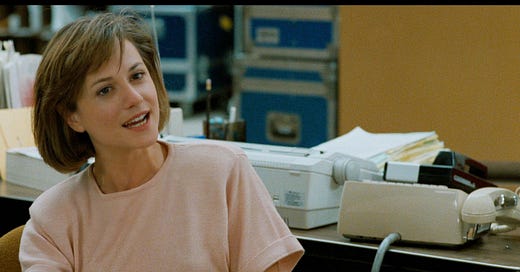When I say “sexy,” I’m not talking about pop culture’s fantasy projection of the sultry-eyed, puffed-lipped, stiletto-heeled, plunging-necklined, hiked-skirted vixen that is more fetishized blow-up doll than actual woman.
For women, the word “sexy” can be especially heinous. While it can seem like a compliment, it can also be intrusive, aggressive, and demeaning. It is often used by entitled men who foist their unasked-for opinion of what is sexy in order to diminish women. Part of what makes this possible is that society in general defines sexy mostly as physical appearance that results in instant sexual stimulation. More porn-influenced than person-influenced.
But when I say “sexy,” I’m talking about a quality that transcends mere physical attraction by embracing more deeply stimulating and enduring qualities, the combination of which actually heighten physical attraction.
In her novel The Bluest Eye, Toni Morrison wrote one of the most profound observations about human relations in literature: “Along with the idea of romantic love, she was introduced to another—physical beauty. Probably the most destructive ideas in the history of human thought. Both originated in envy, thrived in insecurity, and ended in disillusion.”
I completely agree with Morrison, which is why I hate the word “sexy.” American society wields the concept like a distorted carnival mirror, constantly shoving it in the faces of men and women in order to make them feel inadequate unless they continually and desperately purchase endless products to make themselves “attractive.” We are trapped in a hamster wheel of consumerism—clothes, make-up, cars, weight-loss programs, Botox injections, and cosmetic surgery—billions of dollars spent chasing a fantasy ideal that can never be achieved because there will always be one more thing you can do, one more product to purchase. It is a hunger that can never be sated because we are told that sexy is the gateway to being loved—and we will never be worthy of love unless we maintain the demanding infrastructure of Being Sexy.
Traditional sexy favors the pin-up girl ideal: youthful, happy, shapely, compliant. This cliched ideal, which is nothing more than an aggressive shill for self-improvement products (think Alec Baldwin in Glengarry Glen Ross)—creates a destructive force in society, especially among our youth. Even while fist-pumping for Girl Power and breaking the glass ceiling, we are still supporting the images that put a woman’s sexual appeal above all her other qualities.
Amy Schumer’s funny but sadly accurate skit about Julia Louis-Dreyfus’s last “sexy” day as an actress addresses this issue (Warning: graphic language):
While that simplistic role model continues to be popular for many, there are other role models in popular culture that provide a much richer and long-lasting example of sexy. Obviously, this is not an exhaustive list. There are many others, but these five movie roles exemplify a reimagining, a shedding of conventional expectations. Each role redefined the quality of sexiness in its time and deepened its meaning for the future.




